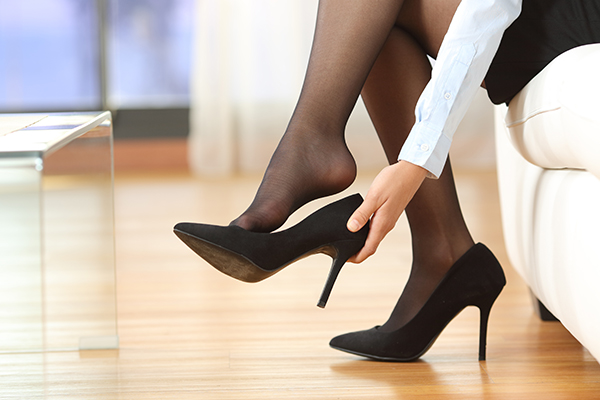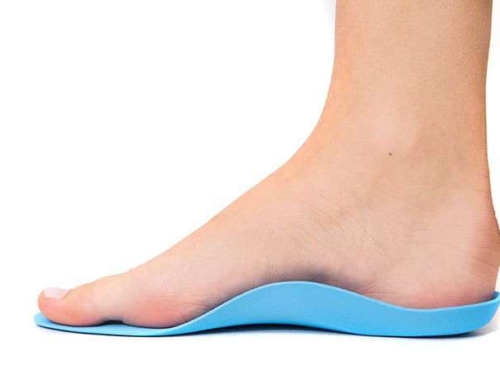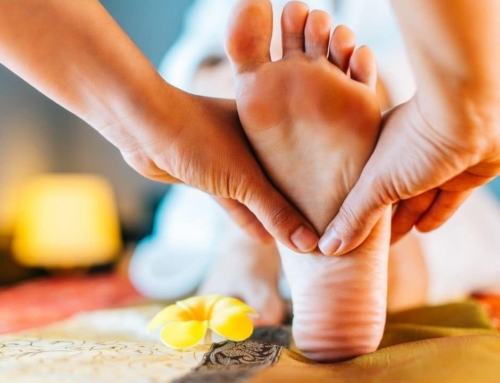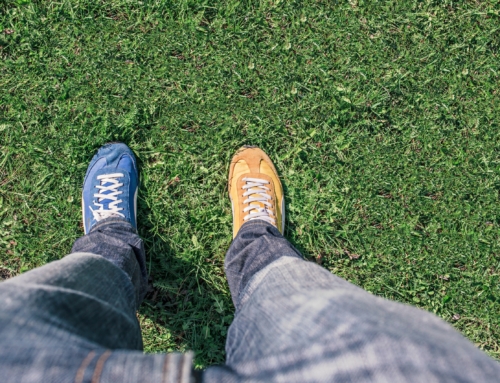Wearing high heels is common for women, especially in their younger years. They want to look attractive when they dress up for events or go out on a date. Career-oriented women are often expected to dress well, and high heels can be part of their daily attire. While high heels can compliment an outfit and make the legs look amazing, they can take a toll on foot health. Many experts warn high heels can cause pain and damage to the feet.
Pressure
The height of the heels influences the adverse effects on a person’s feet as well as how often they wear them. Higher heels give the feet an unnatural position. All of the weight of the person is placed on the ball of the feet. This causes additional pressure on the joints and bones. While many women get used to this, it doesn’t mean it isn’t harmful to their feet. Pressure on the back of the heel bone can result in a growth or deformity of the bone.
Arch strain is common when extremely high heels are worn. The foot is pointed in the downward direction when such shoes are worn. When the person tries to stand or walk around without any shoes on, their feet may be tender. They may experience shooting pain or constant aching because of the strain on their arches.
Wearing high heels often increases the risk of developing Plantar Fasciitis. This is because the Achilles tendon will shorten with time. Toe injuries are common for those wearing high heels often. There is also the risk of twisting or fracturing the ankles. Such injuries or chronic pain may make it uncomfortable to walk. Some of these scenarios may require surgery for any improvement once the damage is done.
Changes to the Toes
The toes help with balance and evenly distribute weight when you stand or walk. Wearing high heels often can change the shape and function of the toes. This is especially true if the high heels have a pointed toe. They may look amazing, but your poor toes are getting crunched together! This can create a V that isn’t natural for the position of your toes. This often results in:
- Bunions
- Hammer toe
- Ingrown toenails
Posture
The impact of high heels does more than harm your foot health, it can take a toll on both your gait and your posture. It can change the way you carry your weight and your ability to walk correctly. This can create a downward spiral of other health concerns. For example, poor posture puts added pressure on the knees, lower back, and hips. Those areas may start to experience pain.
Tips for Wearing High Heels
If you must wear high heels for your career or you love the way they look, take precautions to reduce the risk of problems. Arch supports placed inside of those shoes can make a huge difference. Extra padding inside the shoes can be completed with insoles. This will prevent your feet and toes from rubbing inside the shoes.
Wear lower height shoes with a wedge heel rather than a thin heel that is several inches high. Iti s best to avoid those with pointed toes. The shoes should fit you snuggly, but not too tight. If your feet slip around in them, you are more prone to injuries.
Take your high heels off when you can! If you can do so at your desk at work, do it. Take them off during lunch and on your commute home. Limit wearing high heels as much as you can. Consider switching to some other options such as wedges that offer more support but still give you that great appearance you can gain with high heels.
Don’t ignore any foot pain or other symptoms that wearing high heels may be taking a toll on your well-being. Identifying the problem and correcting it early on can prevent chronic pain, permanent damage, and the need for surgery.






